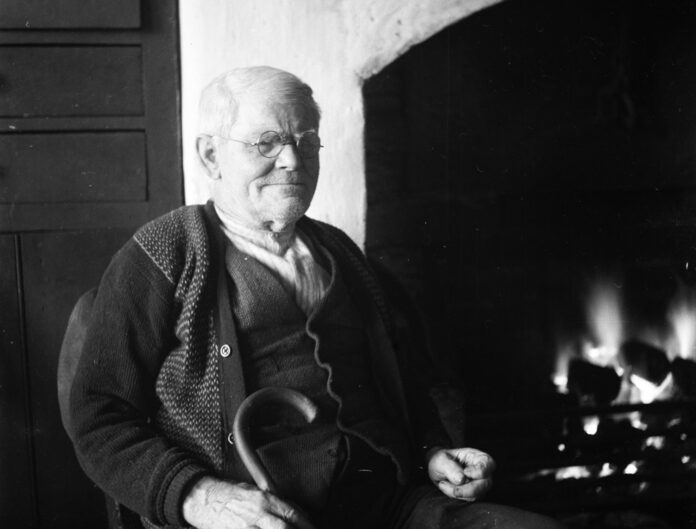VOICES of native Irish speakers from North Clare in the 1930s are being brought back to life by the Royal Irish Academy.
Eighty-five years ago, a German professor, Dr Wilhelm Doegen, came to Ireland at the request of the new Irish Ministry of Education to record Irish-language speakers throughout the island. The objective was to have a permanent record of the spoken language from all of the districts in which it was still spoken.
Clare men Stiofán Ó hEilíre, Máirtín Mag Fhloinn, Seán Carún, James Shannon and Liam Ó Dileáin took part in the project and were recorded at the then University College Galway between September 8 and 21, 1930.
While the recordings have long been known to linguists, the Academy Library wanted to make them freely available to all via the internet and Minister for Education and Skills Ruairí Quinn recently officially launched The Doegen Records Web Project: Irish Dialect Sound Recordings 1928-1931.
Recordings of stories, songs, poems and prayers were made and now the contributions by the Clare men can be heard online at www.doegen.ie.
Funded by the Ministry of Education, the project was managed by the Royal Irish Academy’s Irish Studies Committee, with the work undertaken by Dr Doegen and his assistant, Karl Tempel.
Recording under the strict protocols laid down by Dr Doegen, an expert in the field of dialect recording and phonics, the project ran from 1928 to 1931.
Dr Doegen came to Ireland with Mr Tempel in September 1928. The two men spent a week in University College Cork recording speakers from East Cork and counties Waterford and Tipperary.
They spent the following week at Mercy Convent in Killarney, recording speakers from Kerry and West Cork. The recordings for the remaining provinces were carried out by Mr Tempel, who returned to Ireland in 1930 and 1931.
In all, 136 speakers in 17 counties recorded 400 stories, songs, prayers, charms and parables. The original matrices were transferred to Berlin and reformatted on shellac records.
In 2008, with a funding grant from the Higher Education Authority, the Royal Irish Academy Library began a project to transfer the recordings to the web, together with annotated transcripts of content, speaker details derived from the survey forms, translations of the transcripts and other data.
All five of the Clare men recorded were from the Doolin and Aughinish areas but researchers are keen to point out that North Clare was not the only Irish-speaking area at the time.
“North Clare would have been the strongest area but there were other speakers around Loop Head and Carrigaholt up until around the 1960s. At that time though, the North-West was the strongest area,” said Dr Eoghan Ó Raghallaigh, post-doctoral researcher and editor of the project.
“The academy was given the task of finding speakers and the most important part of their work was to find speakers in areas where Irish was on the way out. The person who would have provided the speakers from Clare would have been James Delargy of the Irish Folklore Commission,” he explained.
Making the recordings online, Dr Ó Raghallaigh believes, will be hugely significant not just to academics but also to people interested in local history and in folklore.
“I think the immediate thing that stands out is that these are examples of extinct dialects,” he told The Clare Champion.
“You have voices here that won’t be heard again. Many of the speakers were born in the 19th Century, some before the Famine. From a linguistic point of view, some of these obsolete dialects retain forms of the language, which don’t occur in surviving dialects. It is full of linguistic interest. The original idea was to make a dialect archive and in the process, they produced this fantastic collection of folklore.
“The collection as a whole is of interest to many different sections of the public, people with a local interest who want to hear what the language in their area sounded like, those interested in the arts, in music and poetry,” Dr Ó Raghallaigh added.
Seán Carún or John Carey from Luogh, Doolin was 72 when the recordings were made. He was a farmer and fisherman and could read and write in English. While he could read Irish, he could not write in his mother tongue.
From the same area was Liam Ó Dileáin or William Dillon, a 62-year-old labourer and farmer.
Stiofán Ó hEilíre or Stephen Hillery was a farmer from the Doolin area and according to the published records, he could read and write a little English. However, some of the material James Delargy collected from Stiofán was later published as Leabhar Stiofán Uí Ealaoire (1980).
James Shannon from Ballyvara, Doolin was 45 at the time of the recordings. His education consisted of “two years of irregular attendance” at school.
Máirtín Mac Fhloinn, Martin Glynn, was aged between 75 and 79 when he was recorded. The Aughinish farmer, according to the contemporary notes, had no teeth at the time and had learned the song that he performed, Brídín Vesey, from a piece he read in a newspaper “about 25 or 30 years ago”.
Martin Mitchell from Tirneevin outside Gort was also recorded as part of the project.
For more information on the Clare people involved and to hear their recordings, log onto www.doegen.ie.
Nicola Corless
A native of Ennis, Colin McGann has been editor of The Clare Champion since August 2020. Former editor of The Clare People, he is a journalism and communications graduate of Dublin Institute of Technology.


